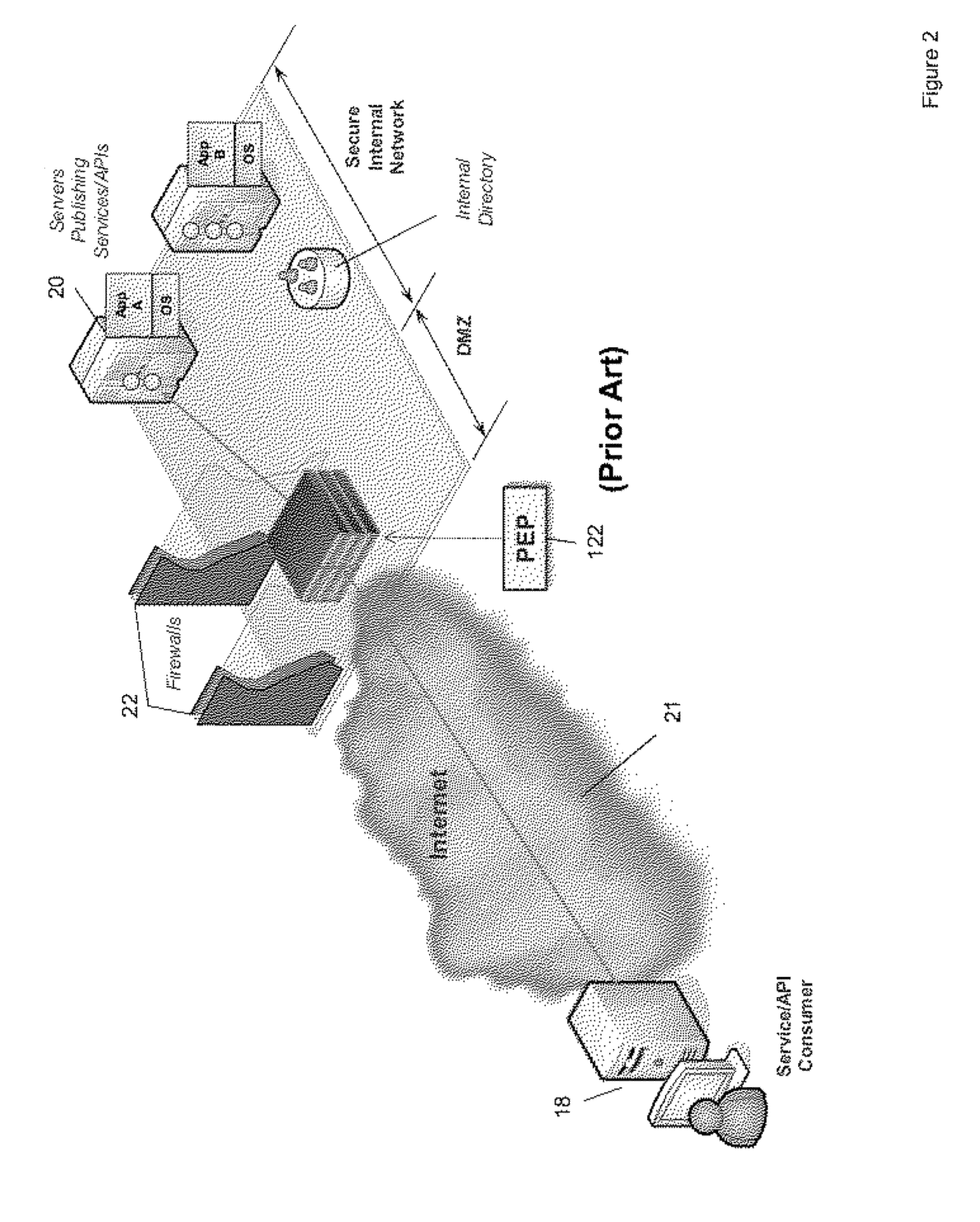However, over time, the term SOA became associated with overreaching and ill-fated attempts to re-invent IT in the enterprise.
Many of these initiatives ultimately failed, and the term rapidly fell into pejorative use.
Regardless of the architectural flavour, the basic challenge an organization faces when publishing a service / API is securing it.
Making a service / API available to the outside world involves deploying a publically accessible endpoint, which may be challenging because of
perimeter security models employed in most organizations (this is illustrated in FIG. 1).
Hardening systems is a difficult task requiring very specialized skills and knowledge.
Many organizations lack these skills, and so many systems are compromised not through exploitation of a service / API they host, but through exploitation of the underlying OS that contains unaddressed vulnerabilities.
However, this approach does not scale well, especially in a diverse environment with different architectures and operating systems.
Consistency is a fundamental concept in good security, and this is extremely difficult to achieve simultaneously across multiple systems.
Furthermore, embedding
access control, transformation, audit, etc into service / API implementation is an extremely inflexible solution.
But more important, it places security responsibility into the hands of dedicated security professionals, rather than distributing it among developers who may not understand the scope of the problem they must address.
However, it also means that internal systems are completely reliant on the PEP-guarded
perimeter security model, and thus are not easily moved to a different environment with a higher
risk profile.
More specifically, it becomes very difficult to migrate perimeter-secured, internal applications hosting services / APIs outside to cloud environments.
This model is very attractive to CIOs and CEOs, who see IT as critical to their business, but not something their organization is necessarily effective at.
SaaS has specific limitations in what customers can do.
SaaS customers can basically customize screen flow and work on data; however they cannot load arbitrary applications into a SaaS cloud.
Cloud computing in general, however, introduces a number of new risks and challenges around data and applications.
Many of these are a by-product of the shift from a private computing environment to a multi-tenancy environment, the transfer of control of infrastructure from local IT staff to a
cloud service provider, and the loss of the
perimeter security model.
These issues conspire to erode confidence in the emerging
cloud computing trend among IT managers, and slow the uptake of cloud technology.
These applications are thus subject to all of the risks of an application deployed in a corporate de-militarized zone (
DMZ).
This radically different
risk profile from the enterprise
data center makes it difficult to migrate existing enterprise applications to the cloud.
Thus, the application hosting the service / API is highly vulnerable to compromise if moved to the cloud unchanged.
This may work in some controlled situations, but few cloud environments support isolation models that can guarantee that there is no way for an outside party to end-run around the PEP and contact the application directly.
In a multi-tenant environment, it is generally not possible to impose traditional restrictions on routing to accommodate the needs of a single customer.
This means, however, that an organization may not have
exclusive access to the hardware their applications run on.
This is another reason that perimeter-deployed PEPs are not effective in cloud environments.
Even if they could
restrict outside traffic from connecting to an internal application, they cannot easily mitigate internal threats.
This allows internal systems to completely delegate security and monitoring responsibility to the PEP; thus, these systems can be quite insecure themselves.
If an organization has a large number of applications, this represents tremendous effort and a huge potential ongoing maintenance burden.
At present, there is no integrated solution that offers a complete answer to this challenge.
There are some partial solutions, but each falls considerably short of providing a simple way to secure and manage applications in the cloud.
They do not address application
transaction security, nor they do not monitor application transaction activity.
This agent provides some rudimentary
access control protection, as well as a scheme to do simple
rate limiting; however it does nothing to provide real isolation of the application in the cloud, assist in hardening the baseline images, or any other features of a comprehensive PEP such as routing,
orchestration, message transformation, etc.
Under these circumstances, it is difficult to be certain that VPC is not subject to compromise.
The drawback to this approach is that it only works in clouds built in the VMware vCD infrastructure, which is proprietary. vShield is an integral part of the offering and cannot be easily moved to a non-VMware environment, such as a Xen-based environment like Amazon Web services.
This addresses portability and packaging; however it does not offer
scalability, monitoring, or security.
The lack of a simple solution to these basic security and management problems is keeping organizations from undertaking wide scale deployment of applications into the cloud.
 Login to View More
Login to View More  Login to View More
Login to View More 


